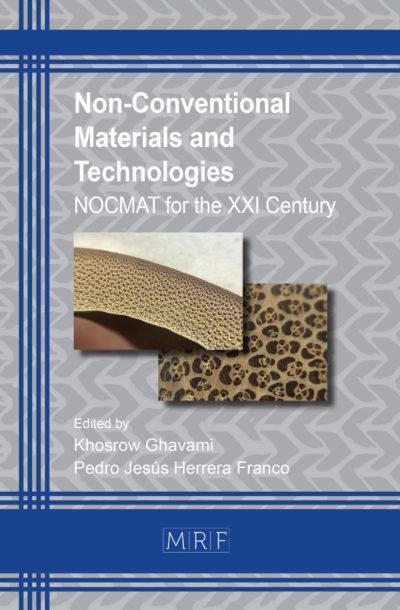–
Property grading by friction induced and continuous solid-state recycling of aluminium scrap
BORGERT Thomas, NORDIEKER Ansgar, HOMBERG Werner
download PDFAbstract. Saving energy and reducing emissions in all sectors is essential if the ambitious climate targets of various European countries are to be met. One way of achieving this is to recycle metallic materials, which require a lot of energy to produce, in a way that minimizes the use of energy and resources. The friction-induced solid-state recycling process enables the energy-efficient recycling of what is in theory an endless aluminium semi-finished product through the continuous rotation of the wheel used. The past investigations proved the energy-efficient recycling of new aluminium scrap (powder, foil, chips) to a full semi-finished product with good properties. The continuous character of the process along with the likewise continuous feeding of the material to be recycled enables both mixing and successive processing of different aluminium alloys. For this purpose, the processed four different aluminium alloys are selectively mixed and processed simultaneously, as well as different alloys are processed one after the other to achieve a gradation of properties along the length of the semi-finished product. The recycled semi-finished product is examined regarding die filling, hardness, tensile strength as well as microstructure. The central result of the investigations is the fact that the friction-induced recycling process has different possibilities for grading the properties and microstructure in a wide range.
Keywords
Recycling, Property-Grading, Aluminium, Energy
Published online 4/24/2024, 9 pages
Copyright © 2024 by the author(s)
Published under license by Materials Research Forum LLC., Millersville PA, USA
Citation: BORGERT Thomas, NORDIEKER Ansgar, HOMBERG Werner, Property grading by friction induced and continuous solid-state recycling of aluminium scrap, Materials Research Proceedings, Vol. 41, pp 2787-2795, 2024
DOI: https://doi.org/10.21741/9781644903131-305
The article was published as article 305 of the book Material Forming
![]() Content from this work may be used under the terms of the Creative Commons Attribution 3.0 license. Any further distribution of this work must maintain attribution to the author(s) and the title of the work, journal citation and DOI.
Content from this work may be used under the terms of the Creative Commons Attribution 3.0 license. Any further distribution of this work must maintain attribution to the author(s) and the title of the work, journal citation and DOI.
References
[1] BMU, Climate Action Report 2017 on the German Government’s Climate Action Programme 2020, 2018
[2] J. Buberger, A. Kersten, M. Kuder, R. Eckerle, T. Weyh, T. Thiringer, Total CO2-equivalent life-cycle emissions from commercially available passenger cars, Renew. Sust. Energ. Rev. 159 (2022). https://doi.org/10.1016/j.rser.2022.112158
[3] Q. Dai, J.C. Kelly, A. Burnham, A. Elgowainy, Updated Life-Cycle Analysis of Aluminum Production and Semi-Fabrication for the GREET Model, Energy Systems Division, 2015. https://doi.org/10.2172/1224957
[4] H.-G. Schwarz, Aluminum Production and Energy, Encyclopedia of Energy 1 (2004) 81–95. https://doi.org/10.1016/B0-12-176480-X/00372-7
[5] E. Balomenos, D. Panias, I. Paspaliaris, Energy and Exergy Analysis of the Primary Aluminum Production Processes: A Review on Current and Future Sustainability, Miner. Process. Extr. Metall. 32 (2011) 69–89. https://doi.org/10.1080/08827508.2010.530721
[6] S. Shamsudin, M.A. Lajis, Z.W. Zhong, Solid-state recycling of light metals: A review, Adv. Mech. Eng. 8 (2016) 1-23. https://doi.org/10.1177/1687814016661921
[7] J.B. Fogagnolo, E.M. Ruiz-Navas, M.A. Simón, M.A. Martinez, Recycling of aluminium alloy and aluminium matrix composite chips by pressing and hot extrusion, J. Mater. Process. Technol. 143 (2003) 792-795. https://doi.org/10.1016/S0924-0136(03)00380-7
[8] M. Haase, N. Ben Khalifa, A.E. Tekkaya, W.Z. Misiolek, Improving mechanical properties of chip-based aluminum extrudates by integrated extrusion and equal channel angular pressing (iECAP), Mater Sci Eng A 539 (2012)194–204. https://doi.org/10.1016/j.msea.2012.01.081
[9] A. Wagiman, M. S. Mustapa, R. Asmawi, S. Shamzudin, M. A. Lajis, Y. Mutoh, A review on direct hot extrusion technique in recycling of aluminium chips, Int. J. Adv. Manuf. Technol. 106 (2019) 641-653. https://doi.org/10.1007/s00170-019-04629-7
[10] U.F.H. Suhuddin, L. Rath, R.M. Halak, B. Klusemann, Microstructure evolution and texture development during production of homogeneous fine-grained aluminum wire by friction extrusion, Mater. Charact. 205 (2023). https://doi.org/10.1016/j.matchar.2023.113252
[11] S.A. Smythe, B.M. Thomas, D. Suarez-Fernandez, X. Fang, B. Marguet, M. Jackson, Recycling of titanium alloy swarf directly into wire using the conform TM continuous extrusion process, MATEC Web Conf 321 (2020). https://doi.org/10.1051/matecconf/202032103028
[12] R. Schneider, B. Heine, R.J. Grant, Z. Zouaoui, Mechanical behaviour of aircraft relevant aluminium wrought alloys at low temperatures, Proc. Inst. Mech. Eng. Pt. L. J. Mater. Des. Appl. 229 (2015) 126–136. https://doi.org/10.1177/1464420713501734 2015
[13] Y. Türe, C. Türe, An assessment of using Aluminum and Magnesium on CO2 emission in European passenger cars, J. Clean. Prod. 247 (2020). https://doi.org/10.1016/j.jclepro.2019.119120
[14] D.-J. Kim, J. Lim, B. Nam, H.-J. Kim, H.-S. Kim, Design and Manufacture of Automotive Hybrid Steel/Carbon Fiber Composite B Pillar Component with High Crashworthiness, Int. J. Pr. Eng. Man.-G.T. 8 (2021) 547-559. https://doi.org/10.1007/s40684-020-00188-5
[15] R. George, M. Worswick, D. Detwiler, J. Kang, Impact Testing of a Hot-Formed B-Pillar with Tailored Properties – Experiments and Simulation, SAE Int. J. Mater. Manf. 6 (2013) 157-162. https://doi.org/10.4271/2013-01-0608
[16] A. Schrek, P. Švec, V. Gajdosová, Deformation properties of tailor-welded blank made of dual phase steels, Acta Mech. et Autom. 10 (2016) 38-42. https://doi.org/10.1515/ama-2016-0007
[17] T. Borgert, W. Homberg, Analysis of temperature effect on strength and microstructure in friction induced recycling process (FIRP), Mater. Res. Proc. (2023). https://doi.org/10.21741/9781644902479-211













